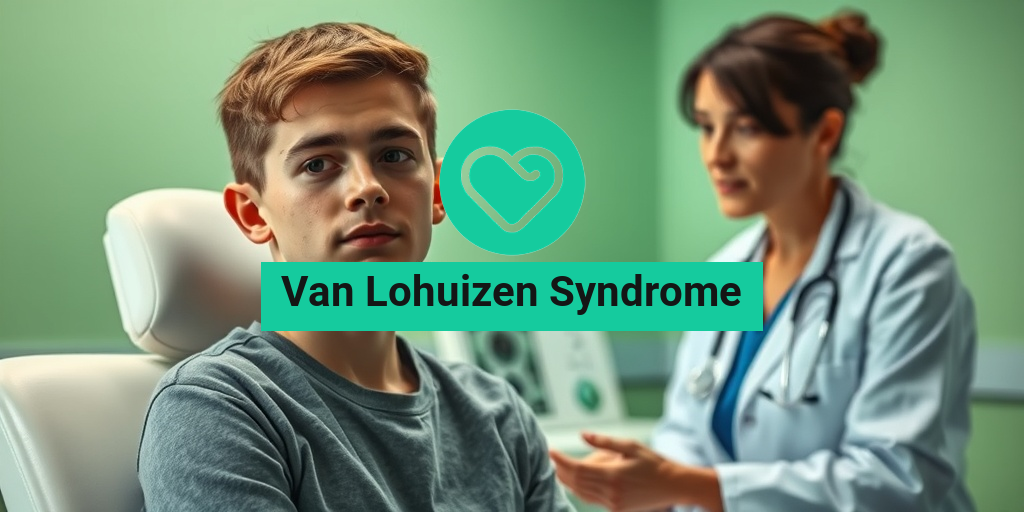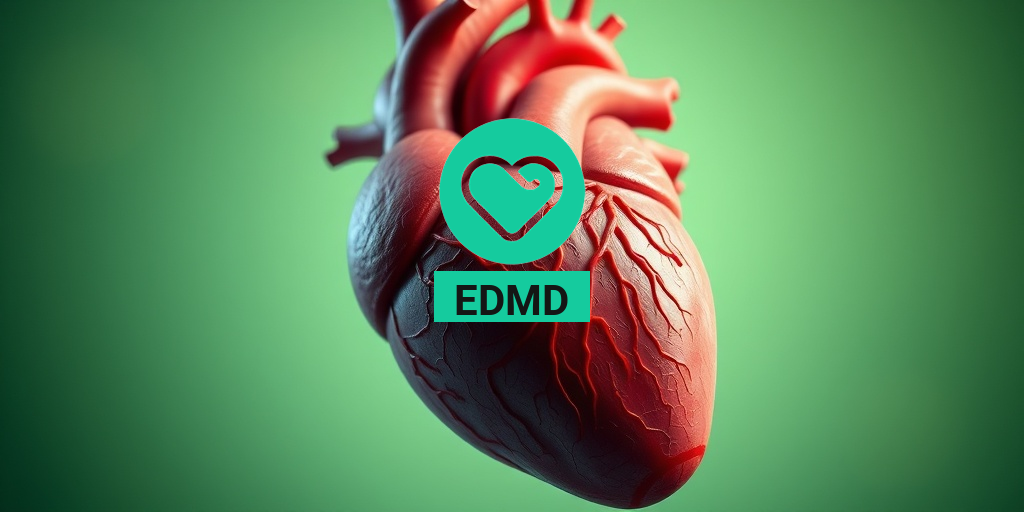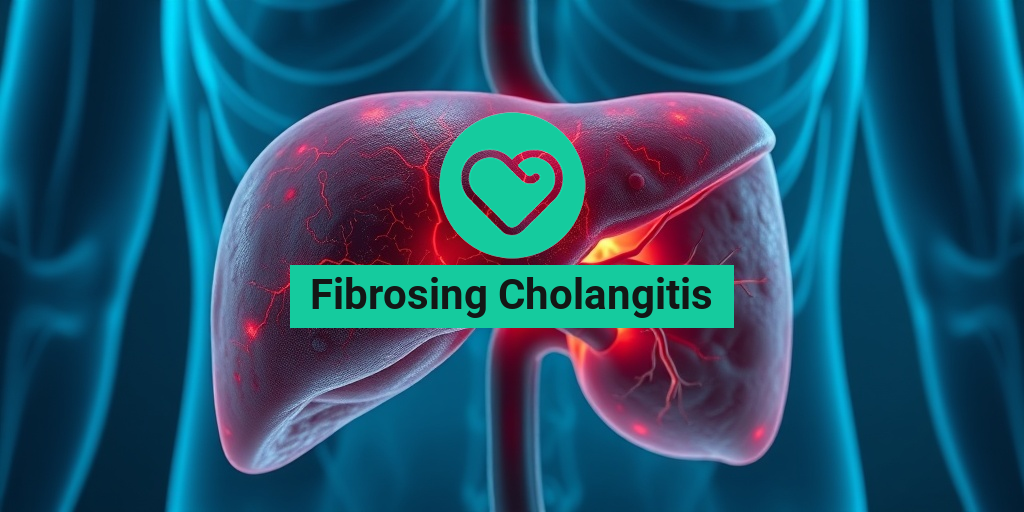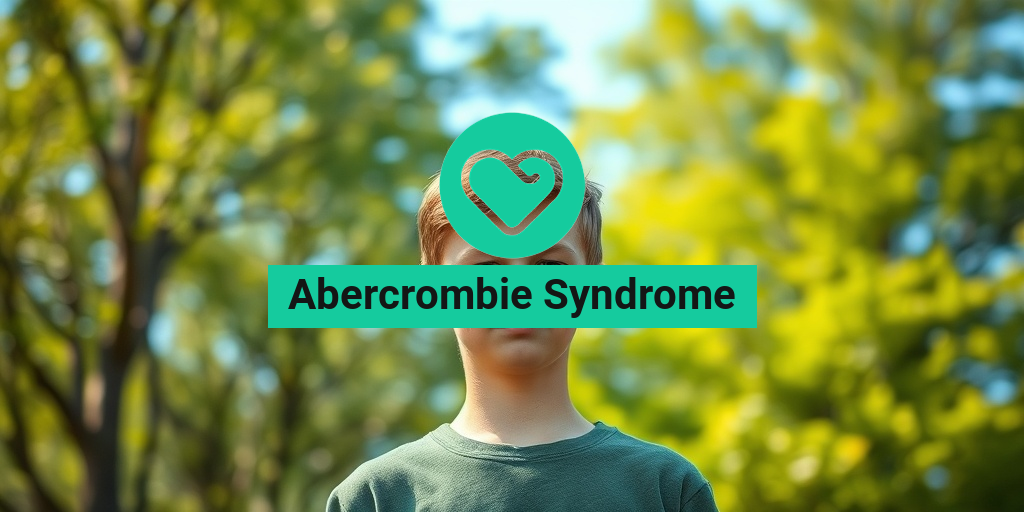What Is Van Lohuizen Syndrome?
Van Lohuizen Syndrome is a rare genetic disorder that primarily affects the development of the brain and other parts of the body. Named after the Dutch physician who first described it, this syndrome is characterized by a variety of neurological and physical symptoms that can significantly impact an individual’s quality of life. While the exact prevalence of Van Lohuizen Syndrome is not well-documented, it is essential for healthcare professionals and families to understand its implications and management strategies.
This syndrome is often classified as a neurodevelopmental disorder, meaning it affects the growth and development of the nervous system. Individuals with Van Lohuizen Syndrome may experience a range of symptoms, which can vary widely in severity and presentation. The condition is typically diagnosed in childhood, although some cases may go unnoticed until later in life.
Causes of Van Lohuizen Syndrome
The underlying cause of Van Lohuizen Syndrome is linked to genetic mutations, although the specific genes involved are still being researched. These mutations can disrupt normal brain development and lead to the various symptoms associated with the syndrome. In some cases, the condition may be inherited, while in others, it may occur sporadically without a family history.
Diagnosis and Testing
Diagnosing Van Lohuizen Syndrome can be challenging due to its rarity and the variability of symptoms. Healthcare providers typically rely on a combination of clinical evaluations, family history assessments, and genetic testing to confirm the diagnosis. Early diagnosis is crucial for implementing appropriate interventions and support systems for affected individuals.
Van Lohuizen Symptoms
The symptoms of Van Lohuizen Syndrome can vary significantly from person to person, but they often include a combination of neurological, physical, and developmental challenges. Understanding these symptoms is vital for early intervention and management.
Neurological Symptoms
- Developmental Delays: Many individuals with Van Lohuizen Syndrome experience delays in reaching developmental milestones, such as walking, talking, and social interactions.
- Cognitive Impairments: Cognitive challenges may range from mild learning disabilities to more severe intellectual disabilities.
- Seizures: Some individuals may experience seizures, which can vary in frequency and severity.
- Behavioral Issues: Behavioral problems, including anxiety, aggression, or social withdrawal, are not uncommon.
Physical Symptoms
- Motor Skill Difficulties: Individuals may have trouble with fine and gross motor skills, affecting their ability to perform everyday tasks.
- Facial Features: Some may exhibit distinct facial features, although these can vary widely.
- Growth Issues: Growth delays or abnormalities in height and weight may also be observed.
Emotional and Social Challenges
In addition to the physical and neurological symptoms, individuals with Van Lohuizen Syndrome may face emotional and social challenges. They might struggle with forming relationships, understanding social cues, and managing their emotions. Early intervention through therapy and support can help improve these skills and enhance their overall quality of life.
Management and Support
While there is currently no cure for Van Lohuizen Syndrome, various management strategies can help alleviate symptoms and improve the quality of life for affected individuals. These may include:
- Therapeutic Interventions: Physical, occupational, and speech therapy can be beneficial in addressing developmental delays and improving daily functioning.
- Educational Support: Tailored educational programs can help children with Van Lohuizen Syndrome thrive in school settings.
- Medication: In some cases, medications may be prescribed to manage specific symptoms, such as seizures or behavioral issues.
For families navigating the complexities of Van Lohuizen Syndrome, resources like Yesil Health AI (yesilhealth.com) can provide valuable, evidence-based health answers and support. Connecting with healthcare professionals and support groups can also be instrumental in managing the condition effectively.
In conclusion, understanding Van Lohuizen Syndrome is crucial for those affected and their families. By recognizing the symptoms and implementing appropriate management strategies, individuals can lead fulfilling lives despite the challenges posed by this rare syndrome. 🌟

Causes of Van Lohuizen Syndrome
Van Lohuizen Syndrome is a rare genetic disorder that primarily affects the development of the brain and other organs. Understanding the causes of this syndrome is crucial for diagnosis and management. The primary cause of Van Lohuizen Syndrome is linked to mutations in specific genes that play a vital role in cellular functions and development.
Genetic Mutations
The most significant cause of Van Lohuizen Syndrome is mutations in the HESX1 gene. This gene is essential for normal brain development and function. When mutations occur, they can disrupt the normal signaling pathways that guide the growth and differentiation of brain cells. This disruption can lead to various neurological issues associated with the syndrome.
Inheritance Patterns
Van Lohuizen Syndrome is typically inherited in an autosomal dominant manner. This means that only one copy of the mutated gene from an affected parent can lead to the syndrome in their offspring. However, in some cases, the mutation can occur spontaneously, meaning it is not inherited from either parent. Understanding these inheritance patterns is vital for genetic counseling and family planning.
Environmental Factors
While genetic mutations are the primary cause, some researchers are investigating whether environmental factors may also play a role in the development of Van Lohuizen Syndrome. Factors such as maternal health during pregnancy, exposure to toxins, and nutritional deficiencies may contribute to the severity of symptoms. However, more research is needed to establish a clear link between these factors and the syndrome.
Risk Factors for Van Lohuizen Syndrome
Identifying the risk factors associated with Van Lohuizen Syndrome can help in early diagnosis and intervention. While the syndrome is rare, certain factors may increase the likelihood of its occurrence.
Family History
One of the most significant risk factors for Van Lohuizen Syndrome is a family history of genetic disorders. If a parent or sibling has been diagnosed with the syndrome or similar genetic conditions, the risk of occurrence in other family members increases. Genetic counseling can provide valuable insights for families with a history of such disorders.
Maternal Age
Research suggests that maternal age may also play a role in the risk of genetic disorders, including Van Lohuizen Syndrome. Women who are older at the time of conception may have a higher risk of chromosomal abnormalities, which can lead to various syndromes. It’s essential for older mothers to receive appropriate prenatal care and genetic screening.
Previous Genetic Conditions
Individuals with a history of other genetic conditions may also be at a higher risk for Van Lohuizen Syndrome. This includes those who have previously had children with genetic disorders or have been diagnosed with conditions that affect genetic stability. Regular check-ups and genetic testing can help in monitoring and managing these risks.
Ethnic Background
Some studies indicate that certain ethnic backgrounds may have a higher prevalence of genetic disorders, including Van Lohuizen Syndrome. Understanding the genetic predispositions within specific populations can aid in early detection and intervention strategies. Genetic testing and counseling can be particularly beneficial for individuals from these backgrounds.
In conclusion, while the causes of Van Lohuizen Syndrome are primarily genetic, understanding the associated risk factors can help in early diagnosis and management. Awareness of these factors is crucial for families and healthcare providers alike. 🌟
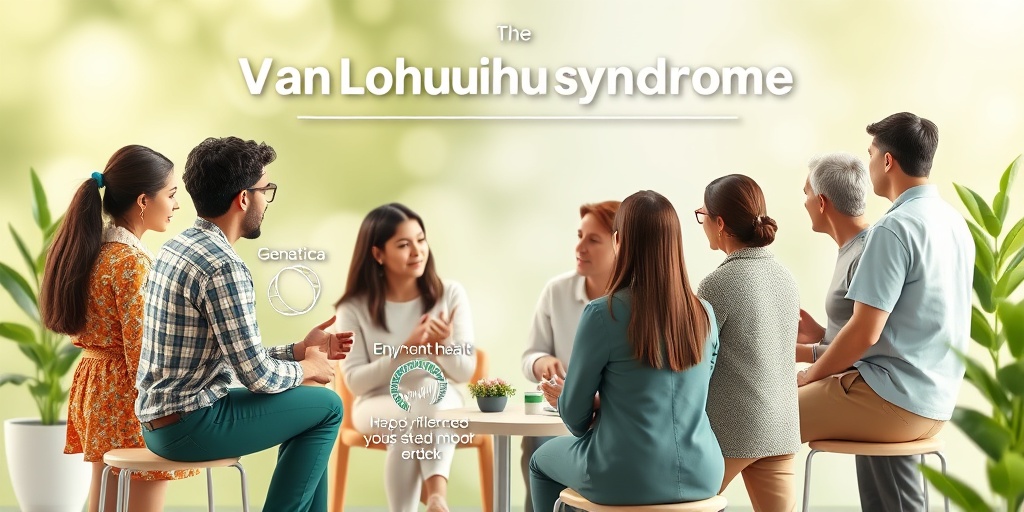
Diagnosis of Van Lohuizen Syndrome
Diagnosing Van Lohuizen Syndrome can be a complex process due to its rarity and the variety of symptoms it presents. This syndrome is characterized by a combination of neurological and developmental issues, which can often lead to misdiagnosis or delayed diagnosis. Here’s a closer look at how healthcare professionals approach the diagnosis of this condition.
Clinical Evaluation
The first step in diagnosing Van Lohuizen Syndrome typically involves a thorough clinical evaluation. Healthcare providers will conduct a detailed medical history and physical examination. During this evaluation, they will look for specific symptoms associated with the syndrome, which may include:
- Developmental delays
- Neurological abnormalities
- Behavioral issues
- Physical anomalies
It’s essential for parents or caregivers to provide comprehensive information about the child’s developmental milestones and any observed behaviors that may be concerning. This information can significantly aid in the diagnostic process.
Genetic Testing
Given that Van Lohuizen Syndrome has a genetic component, genetic testing plays a crucial role in confirming the diagnosis. Geneticists may recommend tests to identify specific mutations associated with the syndrome. These tests can help differentiate Van Lohuizen Syndrome from other similar conditions, ensuring that the patient receives the most accurate diagnosis.
Imaging Studies
In some cases, imaging studies such as MRI or CT scans may be utilized to assess any structural abnormalities in the brain or other organs. These imaging techniques can provide valuable insights into the neurological aspects of the syndrome and help guide treatment options.
Multidisciplinary Approach
Diagnosing Van Lohuizen Syndrome often requires a multidisciplinary approach. This means that a team of specialists, including neurologists, geneticists, and developmental pediatricians, may collaborate to evaluate the patient comprehensively. This team effort ensures that all aspects of the syndrome are considered, leading to a more accurate diagnosis and better management of the condition.
Treatment Options for Van Lohuizen Syndrome
While there is currently no cure for Van Lohuizen Syndrome, various treatment options can help manage symptoms and improve the quality of life for those affected. The treatment plan is typically tailored to the individual’s specific needs and may involve a combination of therapies and interventions.
Therapeutic Interventions
Therapeutic interventions are often the cornerstone of treatment for Van Lohuizen Syndrome. These may include:
- Physical Therapy: Aimed at improving motor skills and coordination.
- Occupational Therapy: Focused on enhancing daily living skills and independence.
- Speech Therapy: Designed to address communication difficulties and improve language skills.
These therapies can significantly aid in the development of essential skills and help individuals with Van Lohuizen Syndrome reach their full potential.
Medications
In some cases, medications may be prescribed to manage specific symptoms associated with the syndrome. For instance, if a patient experiences seizures or behavioral issues, appropriate medications can help control these symptoms. It’s crucial for healthcare providers to monitor the patient closely to adjust medications as needed.
Supportive Care
Supportive care is also an essential aspect of managing Van Lohuizen Syndrome. This can include:
- Educational Support: Special education services can help children with learning difficulties.
- Family Counseling: Providing support to families can help them cope with the challenges of raising a child with a rare syndrome.
- Community Resources: Connecting families with local support groups and resources can provide additional assistance.
By addressing the needs of both the individual and their family, supportive care can enhance overall well-being and foster a positive environment for growth and development.
Future Directions in Treatment
As research continues, there is hope for new treatment options for Van Lohuizen Syndrome. Advances in genetic research and therapy may lead to more targeted interventions in the future. Staying informed about ongoing studies and clinical trials can provide families with additional options as they navigate the complexities of this syndrome.

Living with Van Lohuizen Syndrome
Van Lohuizen Syndrome is a rare genetic disorder that can significantly impact the lives of those affected and their families. Understanding this condition is crucial for managing its symptoms and improving the quality of life for individuals living with it. In this section, we will explore the daily challenges faced by those with Van Lohuizen Syndrome, as well as strategies for coping and support.
Understanding the Symptoms
Individuals with Van Lohuizen Syndrome may experience a variety of symptoms, which can vary widely in severity. Some common symptoms include:
- Developmental Delays: Many children with this syndrome may face challenges in reaching developmental milestones.
- Intellectual Disabilities: Cognitive impairments can affect learning and daily functioning.
- Physical Abnormalities: Some individuals may have distinct physical features or health issues that require ongoing medical attention.
- Behavioral Challenges: Anxiety, depression, or other behavioral issues may arise, necessitating psychological support.
Recognizing these symptoms early can lead to timely interventions, which can greatly enhance the quality of life for those affected. Regular check-ups with healthcare professionals are essential to monitor and manage these symptoms effectively.
Daily Life and Coping Strategies
Living with Van Lohuizen Syndrome can present unique challenges, but there are several strategies that can help individuals and their families cope:
- Establishing Routines: Consistent daily routines can provide a sense of stability and predictability, which is beneficial for individuals with developmental delays.
- Seeking Support: Connecting with support groups or communities can provide emotional support and practical advice from others who understand the challenges of living with this syndrome.
- Therapeutic Interventions: Engaging in physical, occupational, or speech therapy can help improve skills and promote independence.
- Education and Advocacy: Educating oneself about Van Lohuizen Syndrome and advocating for necessary resources and accommodations can empower families and individuals.
It’s important for families to remember that they are not alone. Many organizations and online communities offer resources and support for those affected by Van Lohuizen Syndrome. Connecting with others can provide valuable insights and encouragement. 🌟
Future Research on Van Lohuizen Syndrome
As awareness of Van Lohuizen Syndrome grows, so does the interest in researching this rare condition. Future research holds the potential to uncover new insights into the genetic basis, treatment options, and overall management of the syndrome. Here, we will discuss some promising areas of research that could shape the future for individuals living with Van Lohuizen Syndrome.
Genetic Studies and Discoveries
One of the most critical areas of research involves understanding the genetic mutations associated with Van Lohuizen Syndrome. By identifying specific genes involved, researchers can:
- Develop Genetic Testing: Improved genetic testing can lead to earlier diagnosis and better management strategies.
- Explore Gene Therapy: Future advancements may pave the way for gene therapy, potentially correcting the underlying genetic issues.
These genetic studies not only enhance our understanding of Van Lohuizen Syndrome but also contribute to the broader field of genetics and rare diseases.
Innovative Treatment Approaches
Research is also focusing on innovative treatment approaches that could improve the quality of life for individuals with Van Lohuizen Syndrome. Some exciting developments include:
- Personalized Medicine: Tailoring treatments based on individual genetic profiles may lead to more effective interventions.
- Behavioral Therapies: Ongoing studies are examining the efficacy of various behavioral therapies to address the psychological aspects of the syndrome.
As researchers continue to explore these avenues, the hope is that new therapies will emerge, providing better outcomes for those affected by Van Lohuizen Syndrome. 🔬
Community and Awareness Initiatives
In addition to scientific research, community awareness initiatives play a vital role in supporting individuals with Van Lohuizen Syndrome. Increased awareness can lead to:
- Funding for Research: Greater public understanding can drive funding for research initiatives aimed at finding effective treatments.
- Support Networks: Awareness campaigns can help connect families with resources and support networks, fostering a sense of community.
As we look to the future, the combination of scientific research and community support will be essential in improving the lives of those living with Van Lohuizen Syndrome. Together, we can work towards a brighter future filled with hope and possibilities. 🌈

Frequently Asked Questions about Van Lohuizen Syndrome
What is Van Lohuizen Syndrome?
Van Lohuizen Syndrome is a rare genetic disorder characterized by a combination of developmental delays, intellectual disabilities, and distinctive physical features. It is often associated with specific genetic mutations that affect normal growth and development.
What are the symptoms of Van Lohuizen Syndrome?
Individuals with Van Lohuizen Syndrome may exhibit a variety of symptoms, including:
- Developmental delays
- Intellectual disabilities
- Distinctive facial features
- Growth abnormalities
- Behavioral issues
How is Van Lohuizen Syndrome diagnosed?
Diagnosis of Van Lohuizen Syndrome typically involves a combination of clinical evaluation, genetic testing, and assessment of developmental milestones. A healthcare professional may look for specific physical traits and developmental patterns to confirm the diagnosis.
What causes Van Lohuizen Syndrome?
The exact cause of Van Lohuizen Syndrome is linked to genetic mutations, which can be inherited or occur spontaneously. Research is ongoing to better understand the genetic factors involved in this condition.
Is there a treatment for Van Lohuizen Syndrome?
Currently, there is no cure for Van Lohuizen Syndrome. However, treatment focuses on managing symptoms and providing supportive care. This may include:
- Therapies (physical, occupational, and speech therapy)
- Educational support
- Behavioral interventions
Can individuals with Van Lohuizen Syndrome lead normal lives?
While Van Lohuizen Syndrome presents challenges, many individuals can lead fulfilling lives with appropriate support and interventions. Early diagnosis and tailored educational programs can significantly improve outcomes.
Where can I find support for Van Lohuizen Syndrome?
Support for families and individuals affected by Van Lohuizen Syndrome can be found through various organizations, online communities, and local support groups. Connecting with others who share similar experiences can provide valuable resources and emotional support. 🌟

